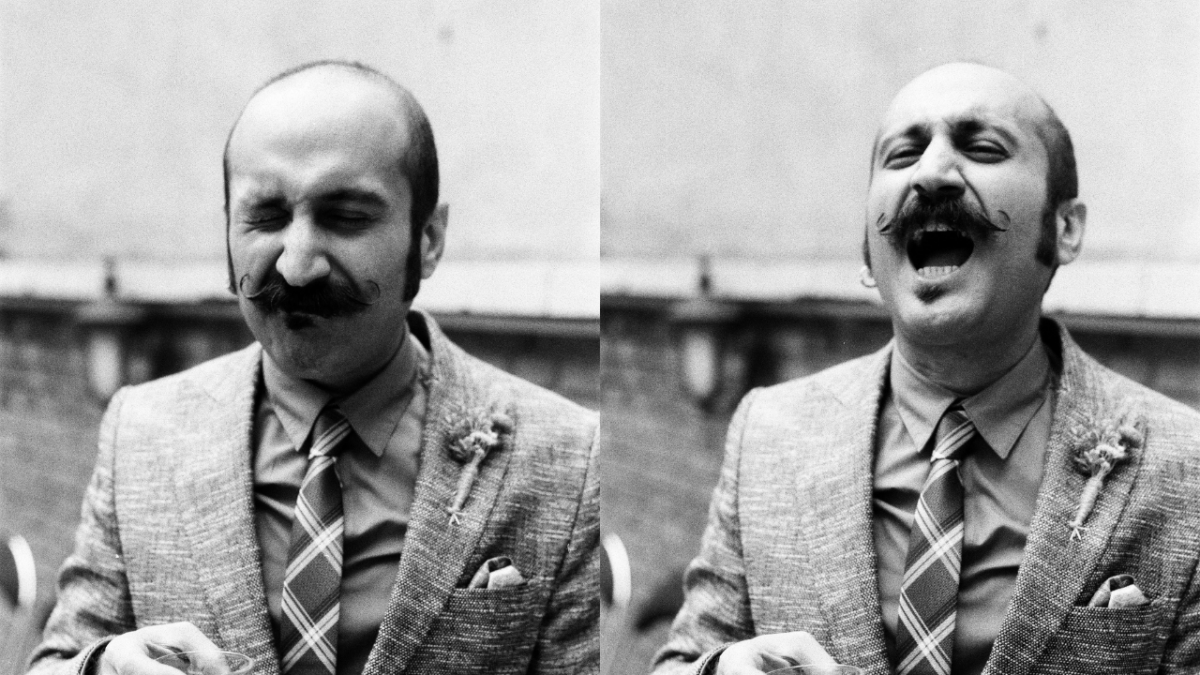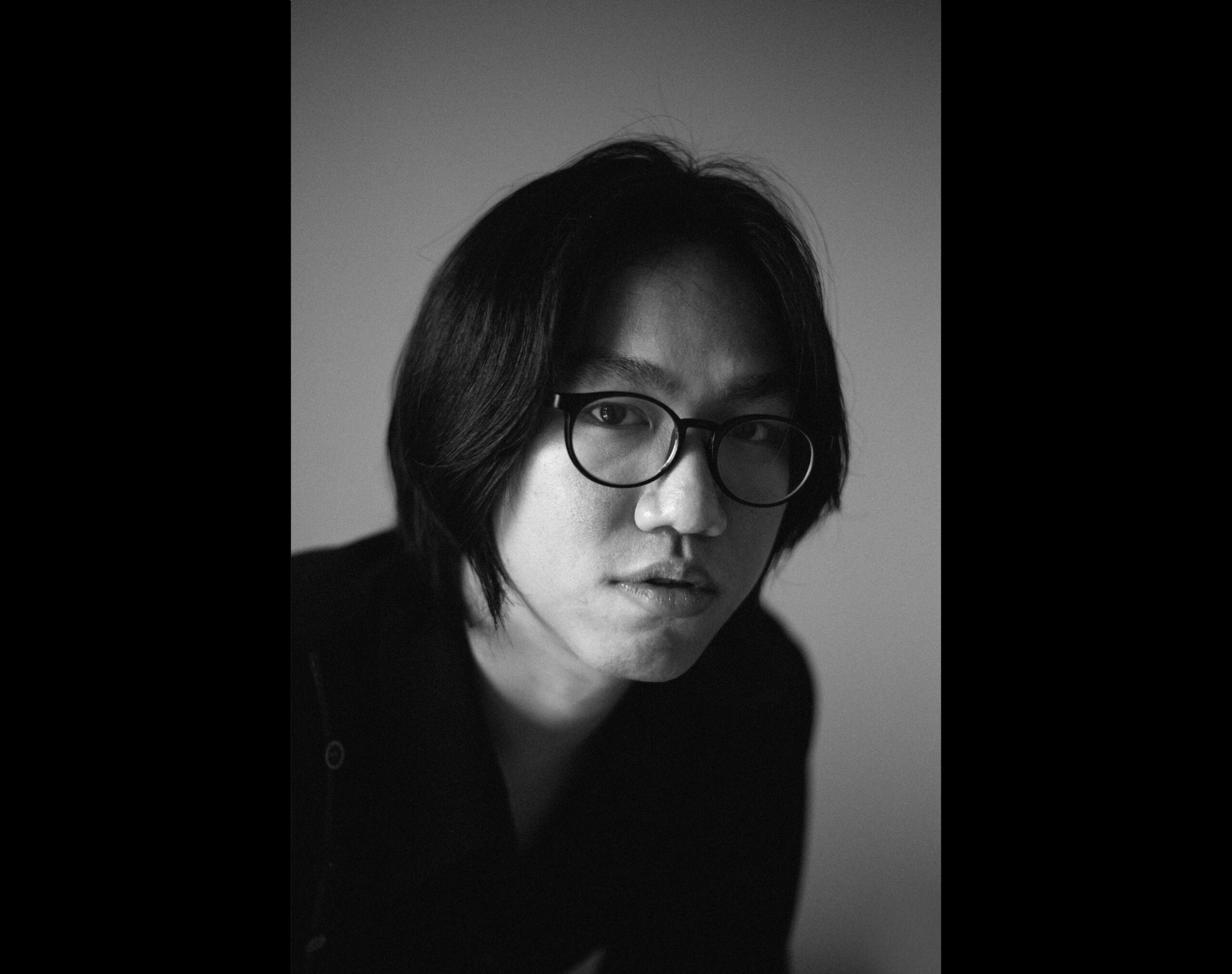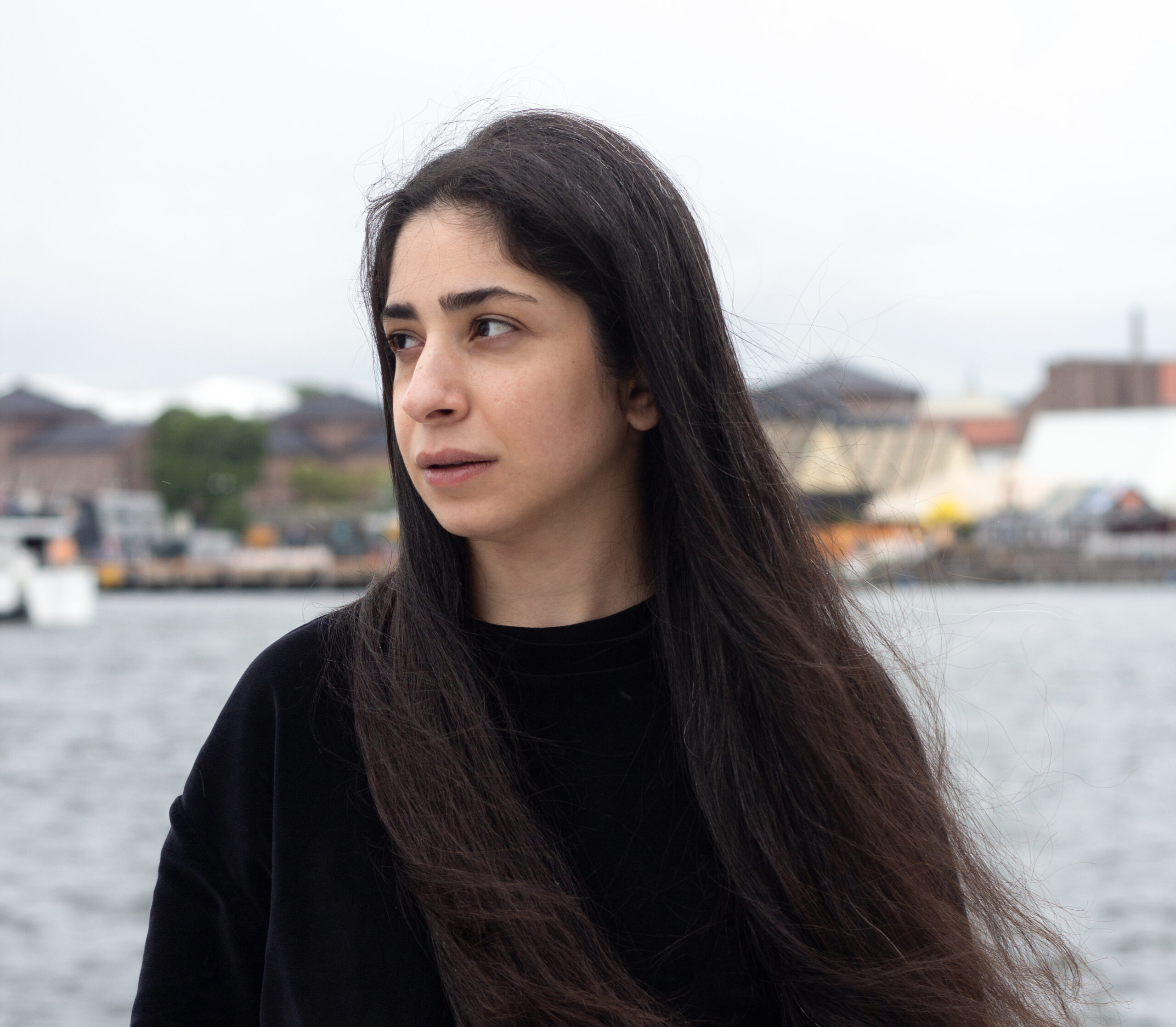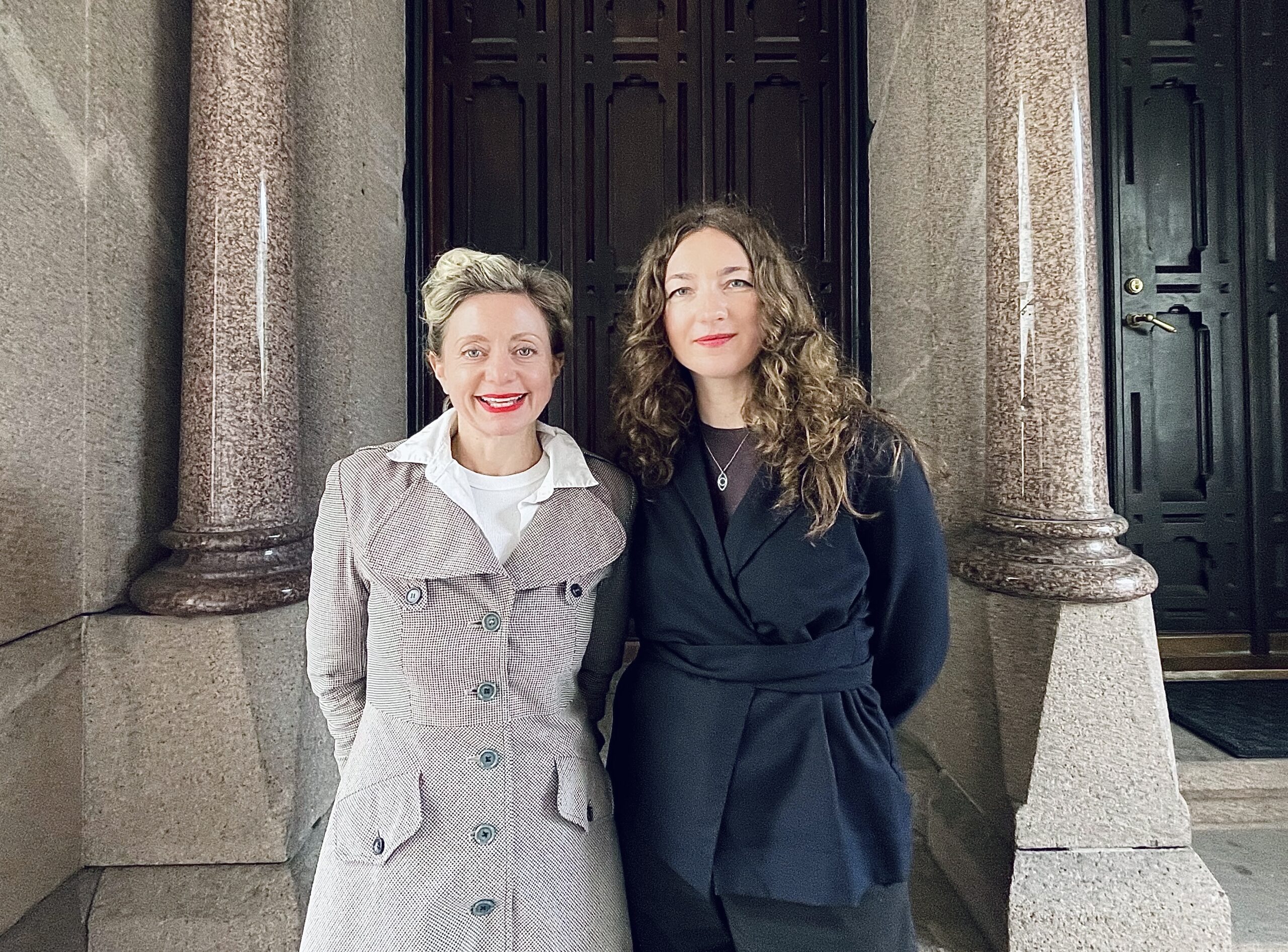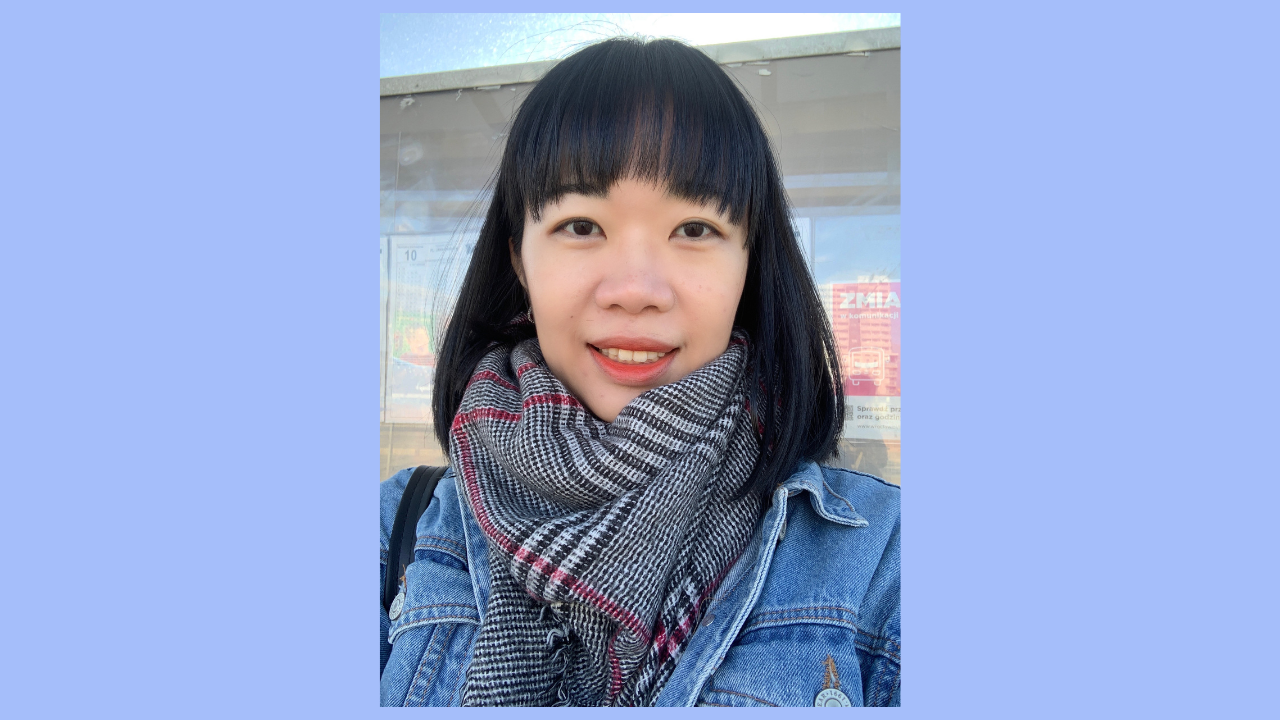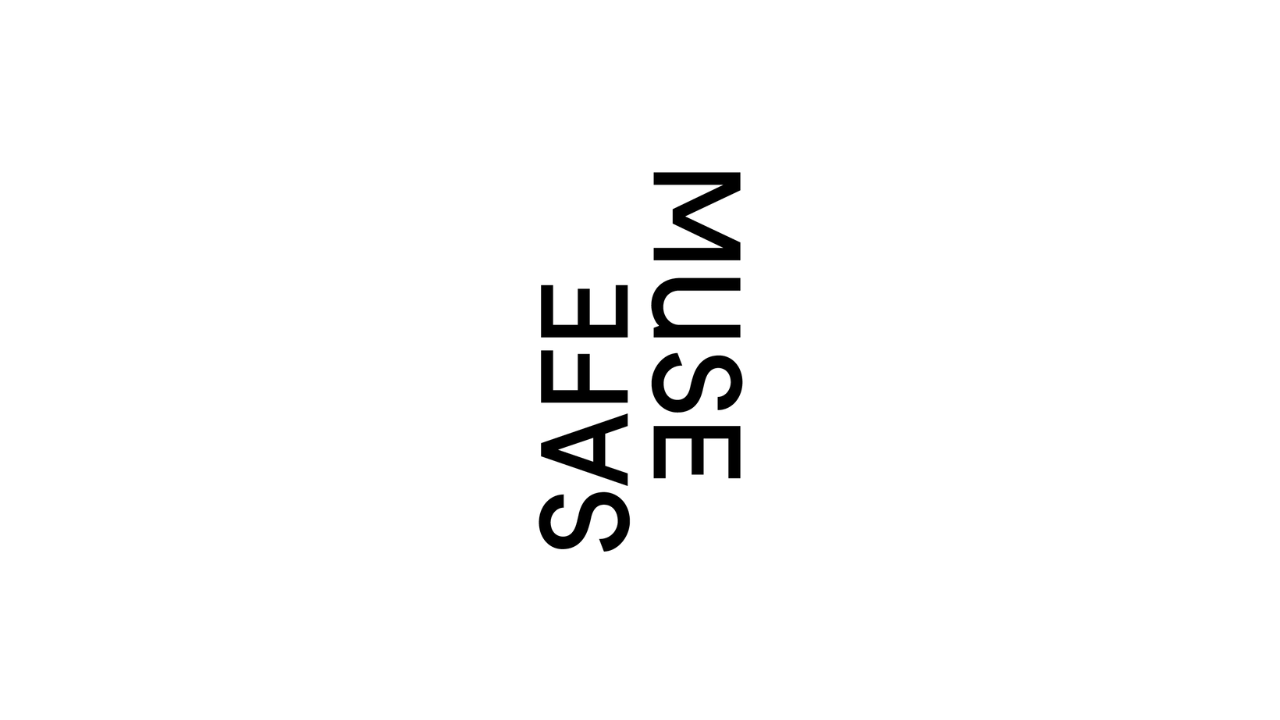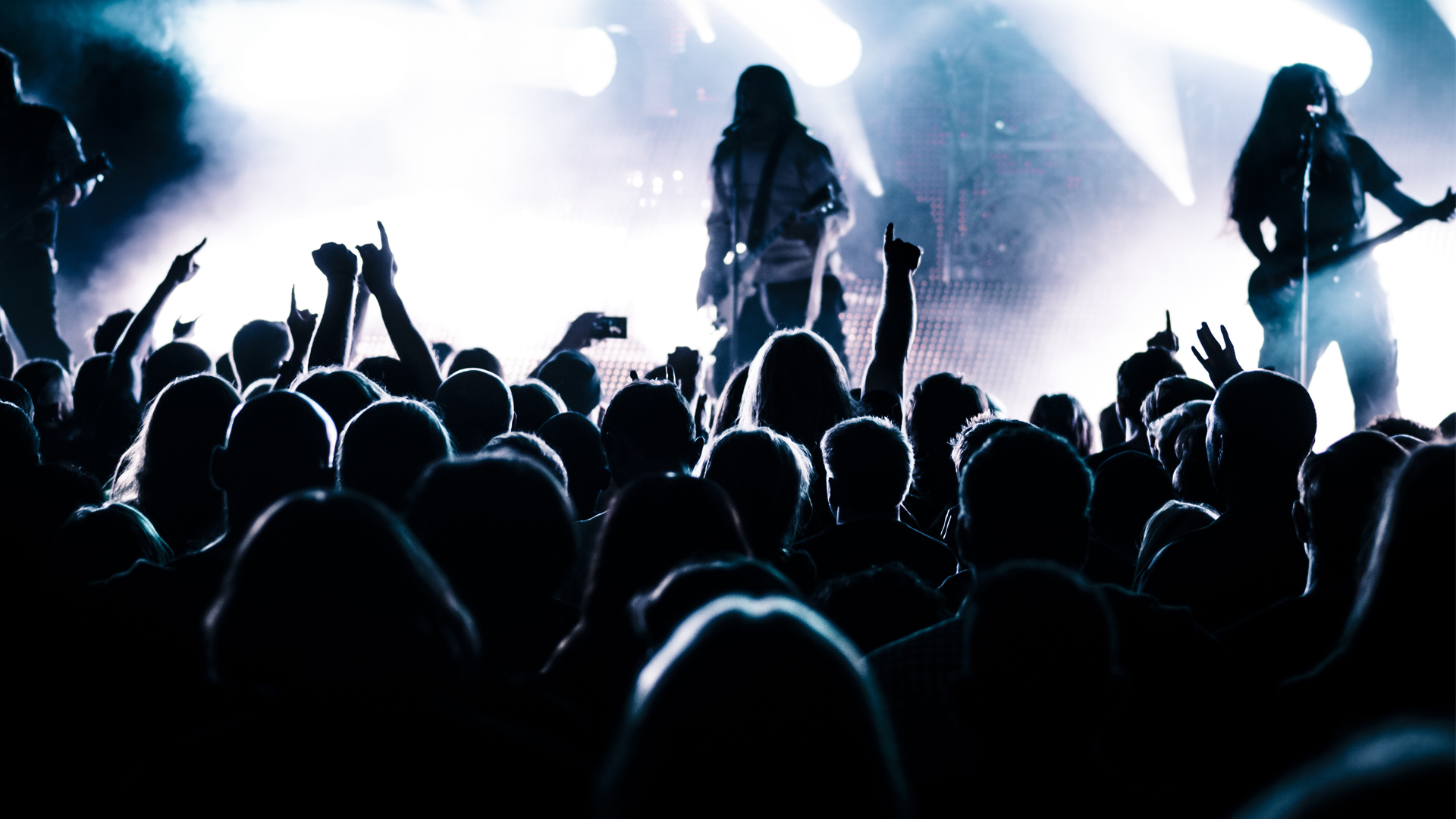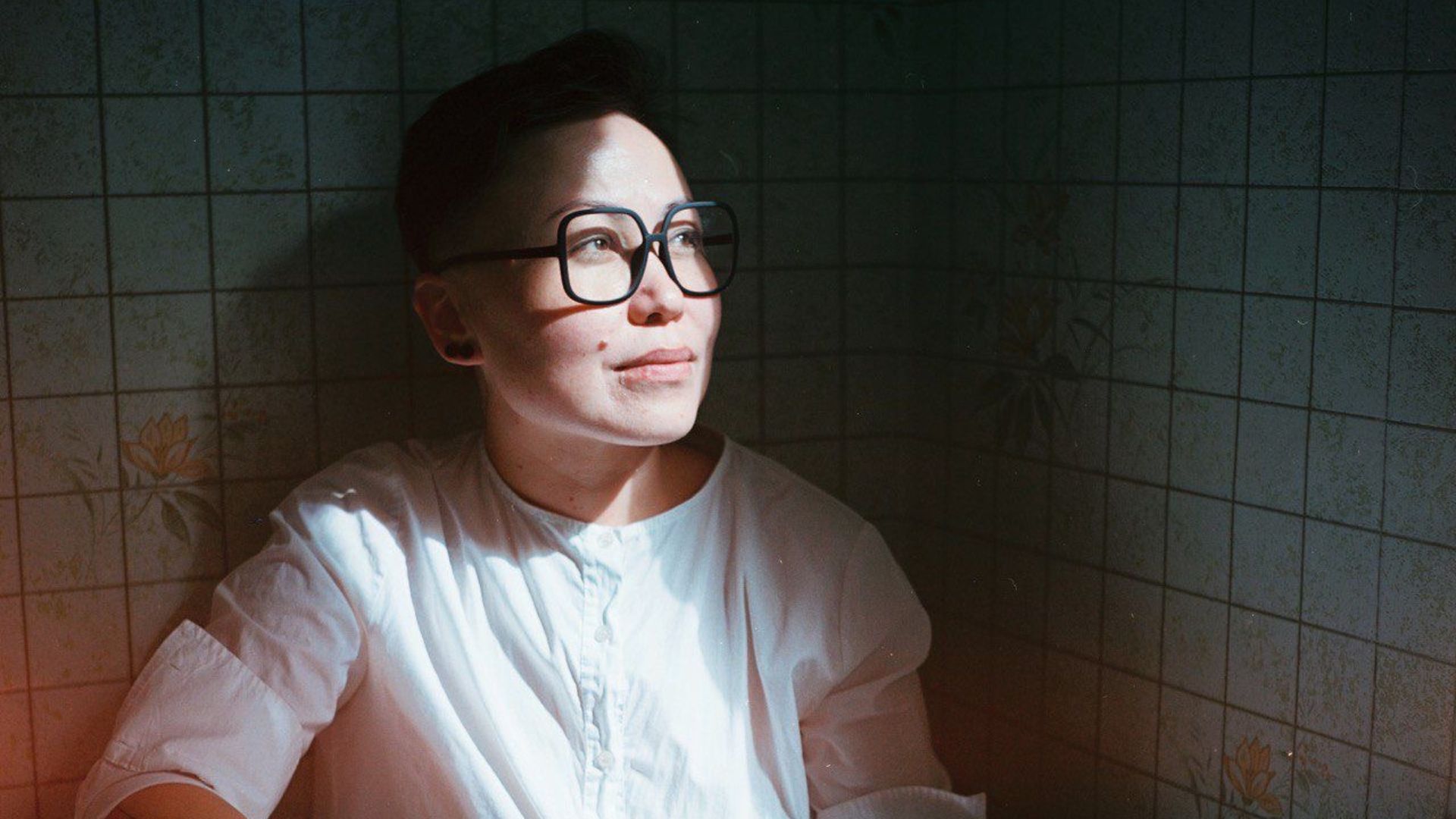Pouya Pour-Amin: An artist’s journey from fear to freedom
Written by Akari Izumi Kvamme
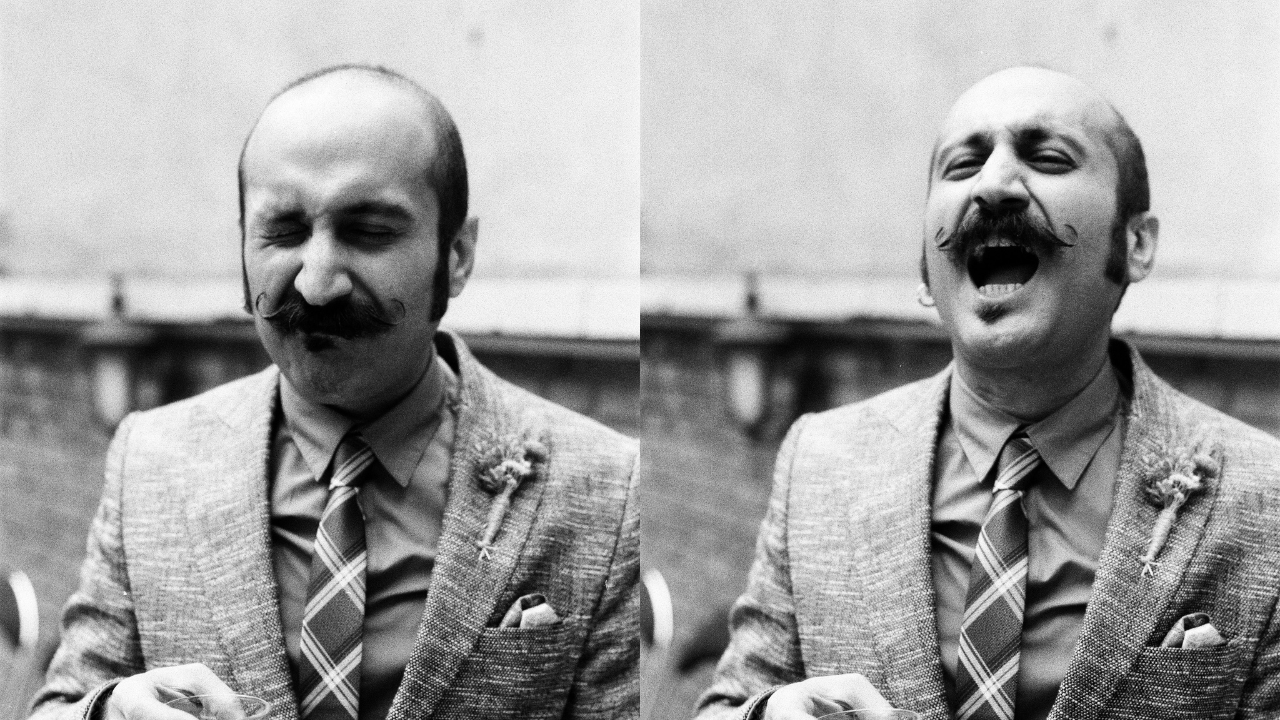
Pouya Pour-Amin is a multidisciplinary artist with over twenty years of experience in music, composition, sound design and performance. Born in Tehran in 1983 into a family that worked in the arts, Pouya grew up in a creative environment. His mother was a puppeteer and actress, his father was a cinematographer, and his grandfather was an instrumentalist who played the tar – a traditional Iranian string instrument. Pouya began learning music when he was five years old and by his late teens he was making his own music.
As a university student, he began to study computer science, music and theatre, but dropped out three times because he felt that the studies and academic system did not have much to offer him. He continued to study through self-learning and private teachers. Pouya played the guitar, but his love for the low frequencies led him to take up the double bass, which he coincidentally discovered while studying at the Tehran Conservatory. Later Pouya joined the contemporary chamber orchestra, The Camerada Orchestra, where he spent a decade of tremedous musical growth under the guidance the conductor Kayvan Mirhadi, who had also been his musical teacher. His very first works as a composer were performed by Mirhadi’s orchestra.
Looking back, Pouya’s grandfather, Akbar Jeddikar, and the conductor of the Camerada Orchestra, Kayvan Mirhadi, were his biggest inspirations growing up:
— They were both very special people to me, opened my eyes to the worlds of music and literature and became my window to the world beyond the strict religious Iranian society, he says.
— My grandfather first of all influenced me as a human being. He was not religious and did not believe in God, something which was very rare for his generation and in Iranian society in general. We had a very close relationship. He was open-minded and introduced me to politics and critical thought through his vast collection of literature. Kayvan Mirhadi, the conductor, was also my classical teacher, but did not have the dogma-point-of-view that most educators had. Instead he was wise and had an open view to the arts and to different kinds of music. He introduced me to Western contemporary music, which opened my eyes and made me realise that there was so much to explore and learn, Pouya recalls.
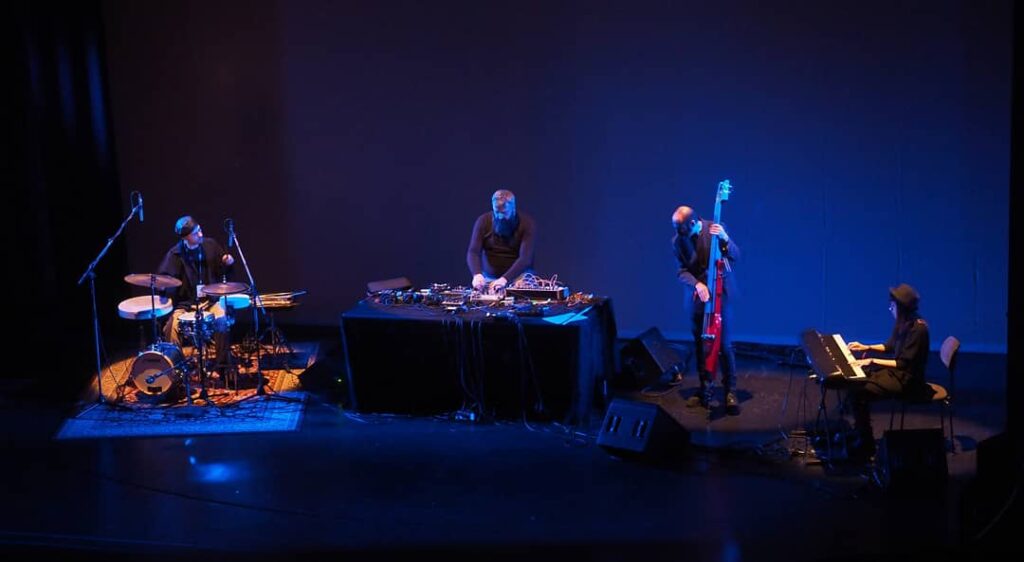
“While living in Iran, I worked a lot in fear. I had to find secret ways, like put my phone in the microwave to avoid being tapped, and I lived under the constant fear of getting in trouble with the authorities.”
— Pouya Pour-Amin
The struggle for artistic freedom
Artists in Iran who refuse to stay silent in the face of the country’s authorities and current sociopolitical situation pay a high price for their expression. Over the last years, the Iranian government has taken on increasingly harsh measures to suppress artistic freedom of expression and exert control over artists through threats, censorship and persecution.
Pouya laments the ongoing situation in his homecountry whereby artists, writers and journalists are frequently subjected to superveillance, interrogations, detention, imprisonment, torture, and even the death penalty to punish those who dare to question or criticise the system. Pouya has many friends and colleagues who have received death threats, been forced to flee the country and live in exile. He, too, has felt the heavy burden of being an artist without freedom of expression.
— While living in Iran, I worked a lot in fear. I had to find secret ways, like put my phone in the microwave, to avoid being tapped and I lived under the constant fear of getting in trouble with the authorities. Sometimes I chose not to put my name on my work to avoid getting in trouble. The thought that someone could call the door bell to detain me, plant evidence and present untrue allegations was constantly in the back of my mind, he says.
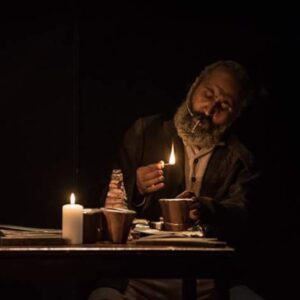
Pouya used to work with different people from various creative industries in Iran, but in his first act of conscious political reaction, he decided to stop working with TV and cinema because he felt like the cultural scene was corrupted and a channel for propagating the state’s lies. He began to work with theatre, but it became evident that this industry, too, was a corrupted sphere. In a culture where questioning and confronting was highly discouraged, Pouya refused to be silenced and raised the question of why the industry did not pay its artists properly. After he took to the street and joined the marches during the Green Movement in 2010, Pouya was imprisoned twice. During the Woman, Life, Freedom movement in 2022, Pouya again took to the streets to partake in the demonstrations that were televised across the world, and felt the fear more than ever before.
— Artistic freedom for me is twenty years of struggling with propaganda, with censorship and a corrupted economy, he says. Even when you are independent, you are at risk if you want to raise questions about politics, the regime or religion, human rights. And it’s only getting worse and worse.
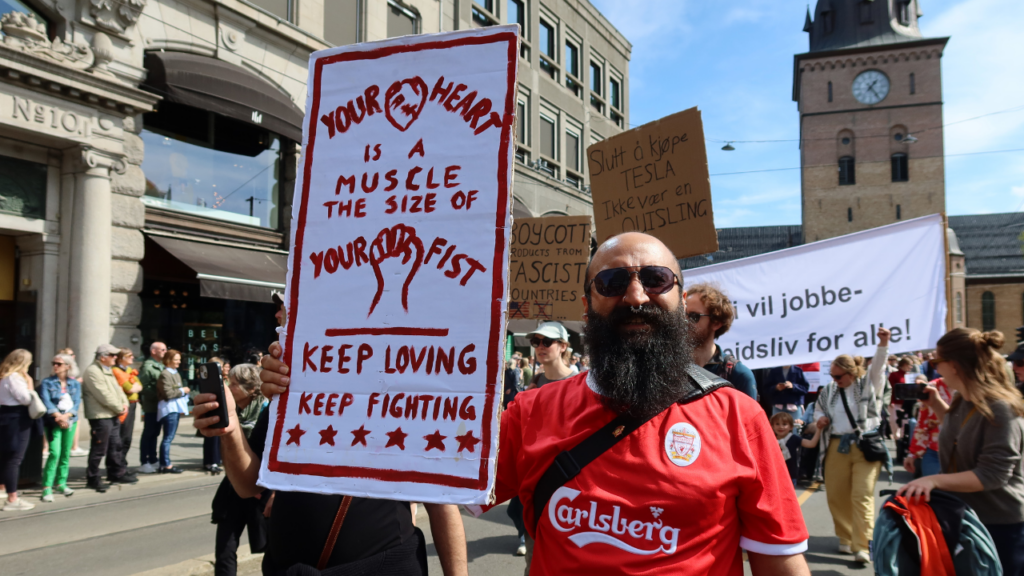
“To have artistic freedom now is a totally new feeling for me. I didn’t know how it would feel. When I look back at this short period I have worked in freedom, I can see that things have started changing in the ways that I think and create art.”
— Pouya Pour-Amin
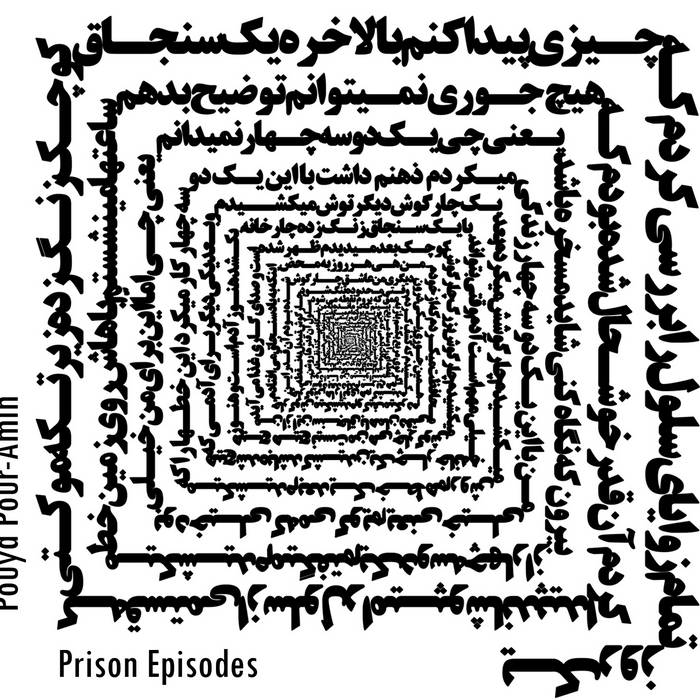
From prison to Safe Haven and the rebirth of an artist
Since 2011, Pouya has expanded his work to include theatre, juggling the roles of musician, actor and director. His music has gradually transitioned into the more experimental and electronic realms. In May of 2024, he travelled to Norway to partake in Safemuse’s Safe Haven artistic residency program. The first part of his artistic residency was spent in the idyllic coastal town of Hvitsten, organised in collaborations with our local partner Hvitsten Salong. Thereafter, Pouya has spent the second part of his residency in Oslo, in collaboration with our partner Nordic Black Theatre.
Through the Safe Haven program, Pouya has continued to evolve as a multidisciplinary artist and developing his creative practice through a blend of music, performance and theatre. Since arriving in Norway as an artist-in-residence, he has composed several works and performed at Ultimafestivalen – the largest contemporary music festival in the Nordic region, as well as Hvitsten Salong and at Caféteatret.
— When I arrived Norway and could breathe out after so many years of living in a state of exception and survival mode, I also realised that I was worn-out after having denied and neglected my own needs and wellbeing. I realised the constant fear I had been living under and how worn-out I was. Living in Hvitsten surrounded by beautiful nature, I was for the first time feeling everything I had not had the chance to feel prior to arriving Norway, especially related to my experience in prison and how hard it had actually been, Pouya says.
The residency coordinator in Safemuse Jon Lundell, is one of many that have worked with Pouya since his arrival to Norway and been impressed by his dedication, versatility and courage to explore new artistic directions:
— Pouya have been exploring and digging deeper in composing new music for different scenes in Oslo and Hvitsten; commissioned work that has challenged him to seek new ways of composing and combining digital and analog instruments and sounds. He has also taken the work with his play Prison Episodes further and is developing it with different artists and partners.
In 2015, Pouya released his first album “Lullaby and Down the Quod” based on his own experience as a political prisoner. His second album, “Prison Episodes” (check out the Bandcamp link), which was released in 2019, was inspired by his study of other Iranian prisoners’ experiences. During his residency in Norway, Pouya’s main artistic ambition is to complete his project Prison Episodes which he has been developing over many years. Together with Safemuse, partners and other artists, Pouya is planning a multidisciplinary performance that combines music, dance, theatre and visual technology to tell the story of the tragedy of political prisoners and their subjection to torture, suffering, solicitations and death. On top of that, he has also begun to record a new album, which he hopes to release in 2026.
Pouya says he has learned a lot of things through the Safemuse residency, not just artistically, but about life and himself:
— I love my culture and I cannot cut that string, but now I am in a position to decide how I want to work with it and to tell my story. To have artistic freedom now is a totally new feeling for me. I didn’t know how it would feel. When I look back at this short period I have worked in freedom, I can see that things have started changing in the ways that I think and create art. When you no longer have barriers in your mind, you starts to think differently and your passions start changing. With no imposed limitations, I think my artistic language has already started to change. I feel like the blinds are gone. While I have been working on my newest album, I can see that I am going in new directions that I would never have imagined before.
Safemuse looks forward to continue the collaboration with Pouya and share more about his upcoming events and projects!
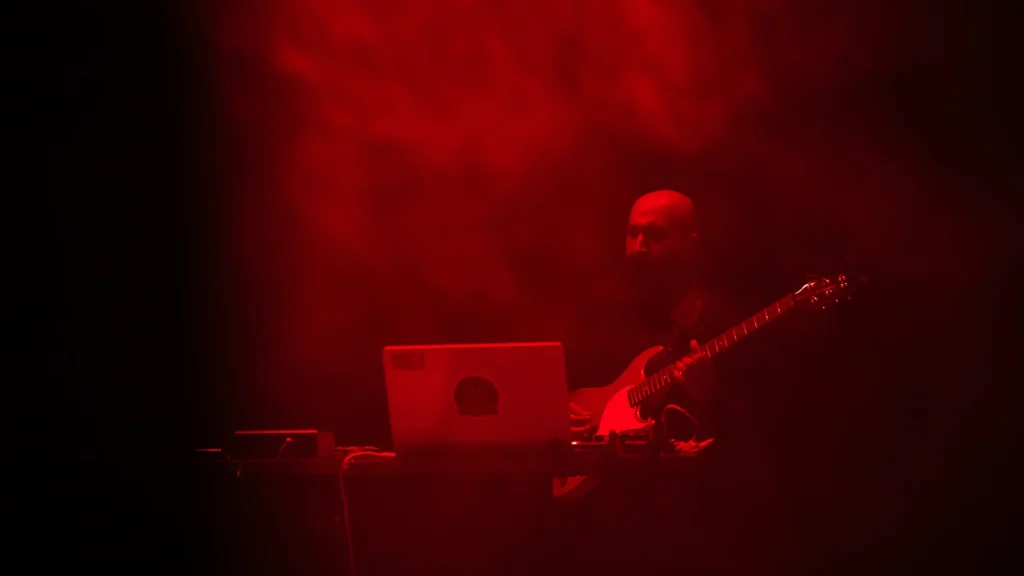
Menu Close Safemuse About Us What we do Our five pillars Our history Who we are Our members Media resources Contact Us News Safe residencies Residency programme Oslo Art Haven Hvitsten Art Haven How to apply Projects Safe Havens Conference Women’s network MoFA+ collaboration Salong på Salongen Artistic mobility Artistic Freedom Week LIDIO .SAFE Artists
About Us What we do Our five pillars Our history Who we are Our members Media resources Contact Us News Safe residencies Residency programme Oslo Art Haven Hvitsten Art Haven How to apply Projects Safe Havens Conference Women’s network MoFA+ collaboration Salong på Salongen Artistic mobility Artistic Freedom Week LIDIO .SAFE Artists
About Us What we do Our five pillars Our history Who we are Our members Media resources Contact Us News Safe residencies Residency programme Oslo Art Haven Hvitsten Art Haven How to apply Projects Safe Havens Conference Women’s network MoFA+ collaboration Salong på Salongen Artistic mobility Artistic Freedom Week LIDIO .SAFE Artists ...
Menu Close Safemuse About Us What we do Our five pillars Our history Who we are Our members Media resources Contact Us News Safe residencies Residency programme Oslo Art Haven Hvitsten Art Haven How to apply Projects Safe Havens Conference Women’s network MoFA+ collaboration Salong på Salongen Artistic mobility Artistic Freedom Week LIDIO .SAFE Artists
About Us What we do Our five pillars Our history Who we are Our members Media resources Contact Us News Safe residencies Residency programme Oslo Art Haven Hvitsten Art Haven How to apply Projects Safe Havens Conference Women’s network MoFA+ collaboration Salong på Salongen Artistic mobility Artistic Freedom Week LIDIO .SAFE Artists
About Us What we do Our five pillars Our history Who we are Our members Media resources Contact Us News Safe residencies Residency programme Oslo Art Haven Hvitsten Art Haven How to apply Projects Safe Havens Conference Women’s network MoFA+ collaboration Salong på Salongen Artistic mobility Artistic Freedom Week LIDIO .SAFE Artists ...
Menu Close Safemuse About Us What we do Our five pillars Our history Who we are Our members Media resources Contact Us News Safe residencies Residency programme Oslo Art Haven Hvitsten Art Haven How to apply Projects Safe Havens Conference Women’s network MoFA+ collaboration Salong på Salongen Artistic mobility Artistic Freedom Week LIDIO .SAFE Artists
About Us What we do Our five pillars Our history Who we are Our members Media resources Contact Us News Safe residencies Residency programme Oslo Art Haven Hvitsten Art Haven How to apply Projects Safe Havens Conference Women’s network MoFA+ collaboration Salong på Salongen Artistic mobility Artistic Freedom Week LIDIO .SAFE Artists
About Us What we do Our five pillars Our history Who we are Our members Media resources Contact Us News Safe residencies Residency programme Oslo Art Haven Hvitsten Art Haven How to apply Projects Safe Havens Conference Women’s network MoFA+ collaboration Salong på Salongen Artistic mobility Artistic Freedom Week LIDIO .SAFE Artists ...
Menu Close Safemuse About Us What we do Our five pillars Our history Who we are Our members Media resources Contact Us News Safe residencies Residency programme Oslo Art Haven Hvitsten Art Haven How to apply Projects Safe Havens Conference Women’s network MoFA+ collaboration Salong på Salongen Artistic mobility Artistic Freedom Week LIDIO .SAFE Artists
About Us What we do Our five pillars Our history Who we are Our members Media resources Contact Us News Safe residencies Residency programme Oslo Art Haven Hvitsten Art Haven How to apply Projects Safe Havens Conference Women’s network MoFA+ collaboration Salong på Salongen Artistic mobility Artistic Freedom Week LIDIO .SAFE Artists
About Us What we do Our five pillars Our history Who we are Our members Media resources Contact Us News Safe residencies Residency programme Oslo Art Haven Hvitsten Art Haven How to apply Projects Safe Havens Conference Women’s network MoFA+ collaboration Salong på Salongen Artistic mobility Artistic Freedom Week LIDIO .SAFE Artists ...
Menu Close Safemuse About Us What we do Our five pillars Our history Who we are Our members Media resources Contact Us News Safe residencies Residency programme Oslo Art Haven Hvitsten Art Haven How to apply Projects Safe Havens Conference Women’s network MoFA+ collaboration Salong på Salongen Artistic mobility Artistic Freedom Week LIDIO .SAFE Artists
About Us What we do Our five pillars Our history Who we are Our members Media resources Contact Us News Safe residencies Residency programme Oslo Art Haven Hvitsten Art Haven How to apply Projects Safe Havens Conference Women’s network MoFA+ collaboration Salong på Salongen Artistic mobility Artistic Freedom Week LIDIO .SAFE Artists
About Us What we do Our five pillars Our history Who we are Our members Media resources Contact Us News Safe residencies Residency programme Oslo Art Haven Hvitsten Art Haven How to apply Projects Safe Havens Conference Women’s network MoFA+ collaboration Salong på Salongen Artistic mobility Artistic Freedom Week LIDIO .SAFE Artists ...
Menu Close Safemuse About Us What we do Our five pillars Our history Who we are Our members Media resources Contact Us News Safe residencies Residency programme Oslo Art Haven Hvitsten Art Haven How to apply Projects Safe Havens Conference Women’s network MoFA+ collaboration Salong på Salongen Artistic mobility Artistic Freedom Week LIDIO .SAFE Artists
About Us What we do Our five pillars Our history Who we are Our members Media resources Contact Us News Safe residencies Residency programme Oslo Art Haven Hvitsten Art Haven How to apply Projects Safe Havens Conference Women’s network MoFA+ collaboration Salong på Salongen Artistic mobility Artistic Freedom Week LIDIO .SAFE Artists
About Us What we do Our five pillars Our history Who we are Our members Media resources Contact Us News Safe residencies Residency programme Oslo Art Haven Hvitsten Art Haven How to apply Projects Safe Havens Conference Women’s network MoFA+ collaboration Salong på Salongen Artistic mobility Artistic Freedom Week LIDIO .SAFE Artists ...
Menu Close Safemuse – Safe Havens for Artists About Us What we do Our five pillars Our history Who we are Our members Media resources Contact Us News Safe residencies Residency programme Oslo Art Haven Hvitsten Art Haven How to apply Projects Safe Havens Conference Women’s network MoFA+ collaboration Salong på Salongen Artistic mobility Artistic
– Safe Havens for Artists About Us What we do Our five pillars Our history Who we are Our members Media resources Contact Us News Safe residencies Residency programme Oslo Art Haven Hvitsten Art Haven How to apply Projects Safe Havens Conference Women’s network MoFA+ collaboration Salong på Salongen Artistic mobility Artistic
– Safe Havens for Artists About Us What we do Our five pillars Our history Who we are Our members Media resources Contact Us News Safe residencies Residency programme Oslo Art Haven Hvitsten Art Haven How to apply Projects Safe Havens Conference Women’s network MoFA+ collaboration Salong på Salongen Artistic mobility Artistic ...
Menu Close Safemuse About Us What we do Our five pillars Our history Who we are Our members Media resources Contact Us News Safe residencies Residency programme Oslo Art Haven Hvitsten Art Haven How to apply Projects Safe Havens Conference Women’s network MoFA+ collaboration Salong på Salongen Artistic mobility Artistic Freedom Week LIDIO SAFE Artists
About Us What we do Our five pillars Our history Who we are Our members Media resources Contact Us News Safe residencies Residency programme Oslo Art Haven Hvitsten Art Haven How to apply Projects Safe Havens Conference Women’s network MoFA+ collaboration Salong på Salongen Artistic mobility Artistic Freedom Week LIDIO SAFE Artists
About Us What we do Our five pillars Our history Who we are Our members Media resources Contact Us News Safe residencies Residency programme Oslo Art Haven Hvitsten Art Haven How to apply Projects Safe Havens Conference Women’s network MoFA+ collaboration Salong på Salongen Artistic mobility Artistic Freedom Week LIDIO SAFE Artists ...
Menu Close Safemuse About Us What we do Our five pillars Our history Who we are Our members Media resources Contact Us News Safe residencies Residency programme Oslo Art Haven Hvitsten Art Haven How to apply Projects Safe Havens Conference Women’s network MoFA+ collaboration Salong på Salongen Artistic mobility Artistic Freedom Week LIDIO SAFE Artists
About Us What we do Our five pillars Our history Who we are Our members Media resources Contact Us News Safe residencies Residency programme Oslo Art Haven Hvitsten Art Haven How to apply Projects Safe Havens Conference Women’s network MoFA+ collaboration Salong på Salongen Artistic mobility Artistic Freedom Week LIDIO SAFE Artists
About Us What we do Our five pillars Our history Who we are Our members Media resources Contact Us News Safe residencies Residency programme Oslo Art Haven Hvitsten Art Haven How to apply Projects Safe Havens Conference Women’s network MoFA+ collaboration Salong på Salongen Artistic mobility Artistic Freedom Week LIDIO SAFE Artists ...
Menu Close Safemuse About Us What we do Our five pillars Our history Who we are Our members Media resources Contact Us News Safe residencies Residency programme Oslo Art Haven Hvitsten Art Haven How to apply Projects Safe Havens Conference Women’s network MoFA+ collaboration Salong på Salongen Artistic mobility Artistic Freedom Week LIDIO .SAFE Artists
About Us What we do Our five pillars Our history Who we are Our members Media resources Contact Us News Safe residencies Residency programme Oslo Art Haven Hvitsten Art Haven How to apply Projects Safe Havens Conference Women’s network MoFA+ collaboration Salong på Salongen Artistic mobility Artistic Freedom Week LIDIO .SAFE Artists
About Us What we do Our five pillars Our history Who we are Our members Media resources Contact Us News Safe residencies Residency programme Oslo Art Haven Hvitsten Art Haven How to apply Projects Safe Havens Conference Women’s network MoFA+ collaboration Salong på Salongen Artistic mobility Artistic Freedom Week LIDIO .SAFE Artists ...
